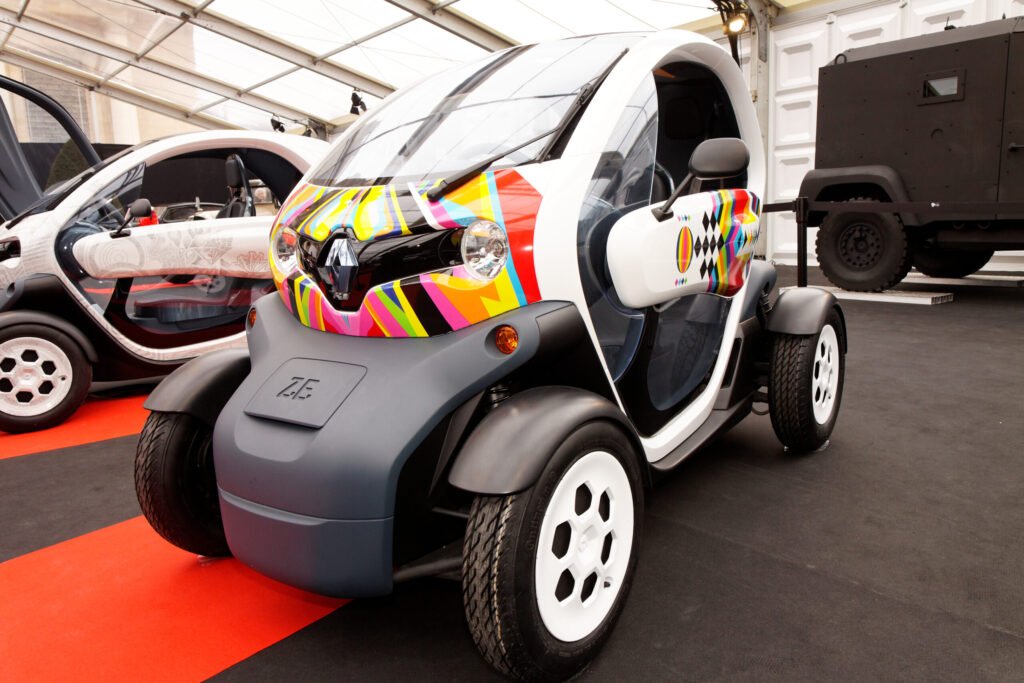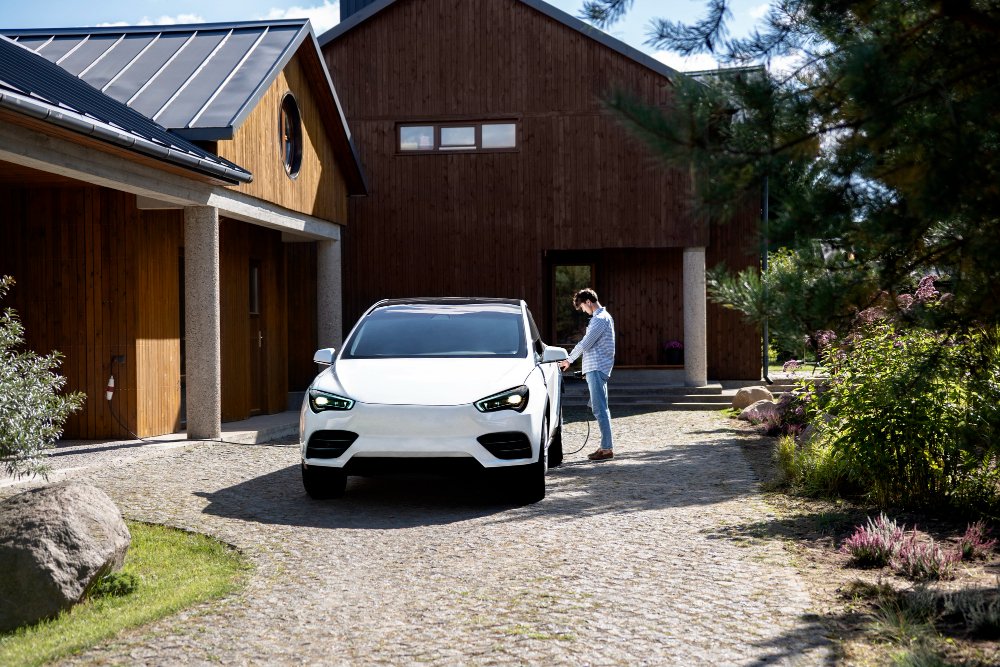In the ever-evolving landscape of electric vehicles, the Twizy Renault electric car stands out as a uniquely compact, ultra-light urban vehicle. Designed with innovation and efficiency in mind, the Twizy is not your typical EV. It’s a blend of scooter-like agility with the comfort and safety of a car, tailored for city dwellers and short-distance commuters.
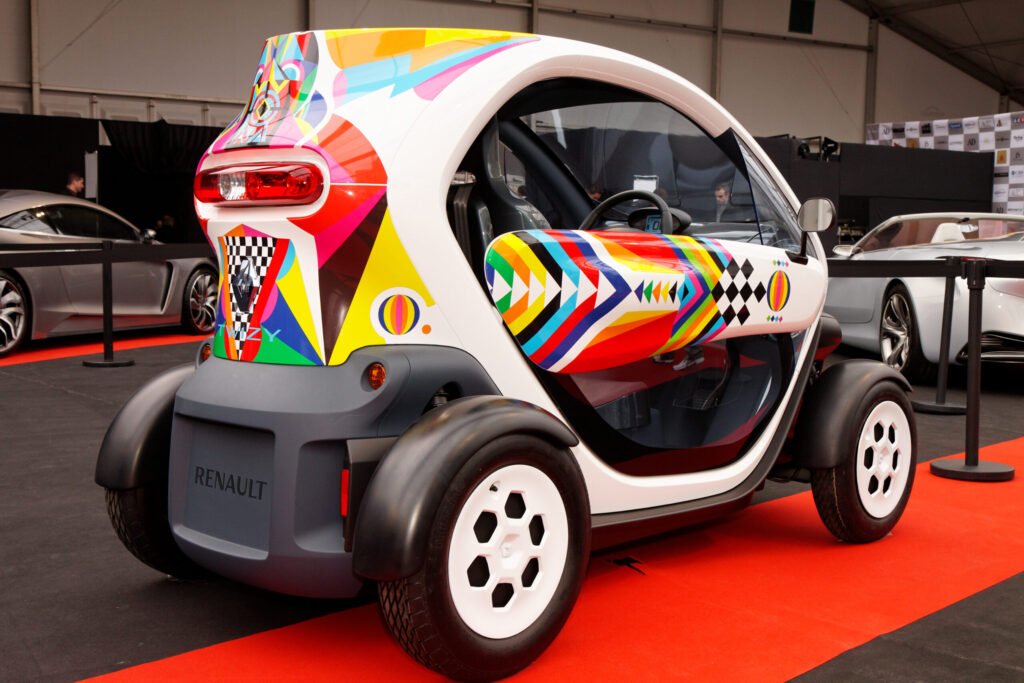
This blog post explores what makes the Twizy a standout in the electric car market. From its design philosophy to its real-world use cases and future outlook, we’ll break down everything you need to know about this futuristic two-seater. Whether you’re considering a new EV or just curious about the future of city driving, this guide is for you.
What Is the Twizy Renault Electric Car?
The Twizy Renault electric car is a small, two-seater electric vehicle introduced by Renault in 2012. Officially categorized as a quadricycle in Europe, it offers an innovative take on urban mobility with its ultra-compact dimensions and electric powertrain.
Key characteristics include:
- Seating for two (tandem-style)
- A lightweight chassis
- A top speed of around 45–80 km/h depending on the model
- A driving range of approximately 100 km on a full charge
The Twizy’s size makes it ideal for narrow streets, dense traffic, and tight parking spaces. It’s fully electric, meaning zero emissions during operation, and is primarily targeted at eco-conscious urban drivers.
For more background on EV types, see Electric vehicle on Wikipedia.
Key Benefits of the Twizy Renault Electric Car
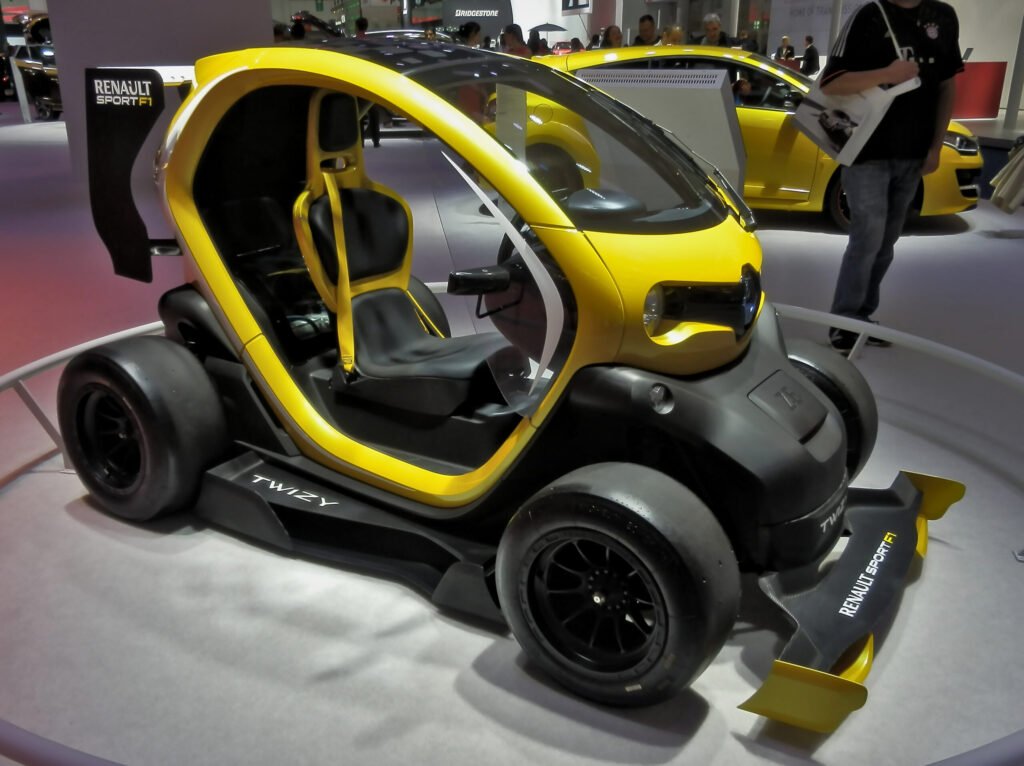
1. Perfect for City Driving
The Twizy’s compact dimensions make it a breeze to navigate congested city streets. Its small footprint allows it to fit into parking spots too tight for regular cars, making daily commuting less stressful.
2. Eco-Friendly
As a fully electric vehicle, the Twizy produces no tailpipe emissions. This makes it a great option for reducing your carbon footprint, especially in urban centers facing pollution challenges.
3. Cost-Effective
The Twizy is one of the most affordable EVs on the market, both in terms of purchase price and running costs. It’s inexpensive to charge, and maintenance costs are minimal thanks to fewer moving parts compared to internal combustion engine vehicles.
4. Innovative Design
With scissor doors (in some versions) and a futuristic look, the Twizy turns heads wherever it goes. It’s a conversation starter and a statement vehicle for those who want something unique.
5. Accessible to a Broad Audience
In many countries, the lower-powered version of the Twizy can be driven without a full driver’s license, making it accessible to teenagers or those with limited driving credentials. This varies by jurisdiction, so local laws should be checked.
Challenges and Limitations
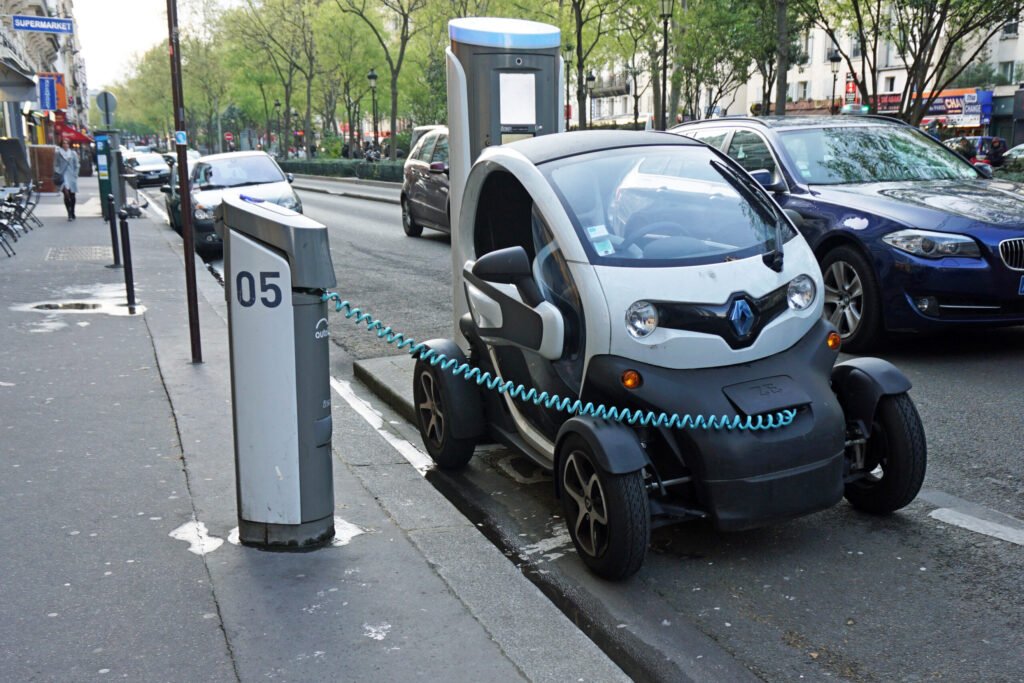
1. Limited Range
With a maximum range of around 100 km per charge, the Twizy is best suited for short commutes. Long-distance travel is not feasible without frequent recharging stops.
2. Minimal Weather Protection
The Twizy is more enclosed than a scooter but lacks full climate control. In colder or rainy weather, comfort may be compromised unless equipped with optional accessories like window panels.
3. Cargo and Passenger Constraints
With only one passenger seat (behind the driver) and limited cargo space, the Twizy isn’t built for families or large grocery runs. It’s a personal vehicle, ideal for solo or two-person urban travel.
4. Charging Infrastructure
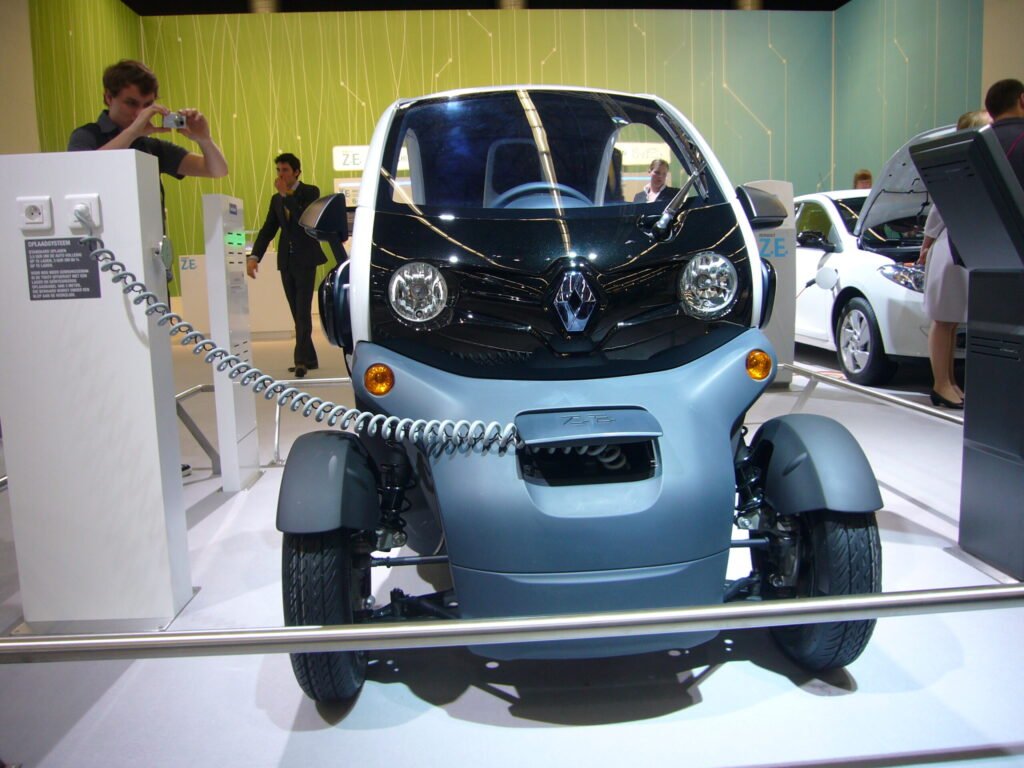
Though the Twizy charges via a standard household outlet, charging times can still range from 3 to 4 hours. Access to a dedicated charging spot is necessary for regular use, and the vehicle doesn’t support fast charging.
5. Perception and Category
In many regions, the Twizy is classified as a quadricycle, not a full car. This may affect insurance, road access, and safety regulations. Additionally, its unconventional appearance may not appeal to traditional car buyers.
Real-World Examples and Use Cases
Urban Commuters in Paris
In cities like Paris, where traffic congestion and parking are daily headaches, the Twizy has gained popularity as a low-cost, efficient alternative to larger vehicles. Commuters use it to weave through traffic and park in tight spaces where standard cars wouldn’t fit.
Tourism and Rental Fleets in Spain
Several Spanish coastal cities have adopted Twizy fleets for tourist rentals. Visitors can explore scenic areas in a quiet, eco-friendly vehicle that’s easy to drive and park.
Corporate and Campus Use
Some universities and corporate campuses in the UK and France use Twizys for internal transportation. Their compact design is perfect for short-distance travel between buildings without polluting or creating noise.
These examples demonstrate the Twizy Renault electric car’s versatility in practical urban and semi-urban scenarios.
Future Trends and Predictions
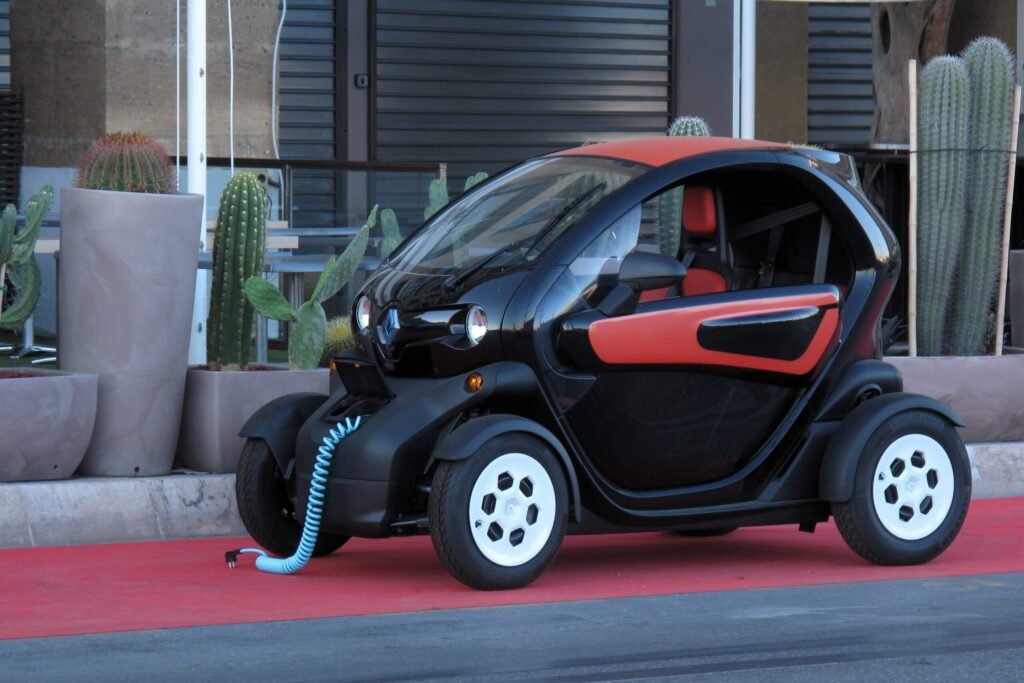
1. Growth in Micromobility
As cities continue to embrace micromobility—small, low-speed vehicles like e-scooters and electric bikes—the Twizy’s niche may grow. It offers more comfort and protection than two-wheel options while still staying compact and efficient.
2. Battery Improvements
Future iterations of the Twizy or similar models could benefit from lighter, more powerful batteries, improving range without increasing size or weight. This could extend usability without compromising its urban focus.
3. Integration into Smart Cities
The Twizy’s digital-friendly design allows for easy integration into shared mobility networks. In the future, it may become a key part of app-based car-sharing platforms that prioritize sustainability and accessibility.
4. Regulatory Evolution
As urban areas tighten emissions standards and promote car-free zones, vehicles like the Twizy may be given priority access, reduced tolls, or parking incentives. Cities such as Oslo, Amsterdam, and Berlin are already leading the way in EV-centric infrastructure.
To understand the shift toward sustainable transport, you can explore Sustainable transport on Wikipedia.
Frequently Asked Questions
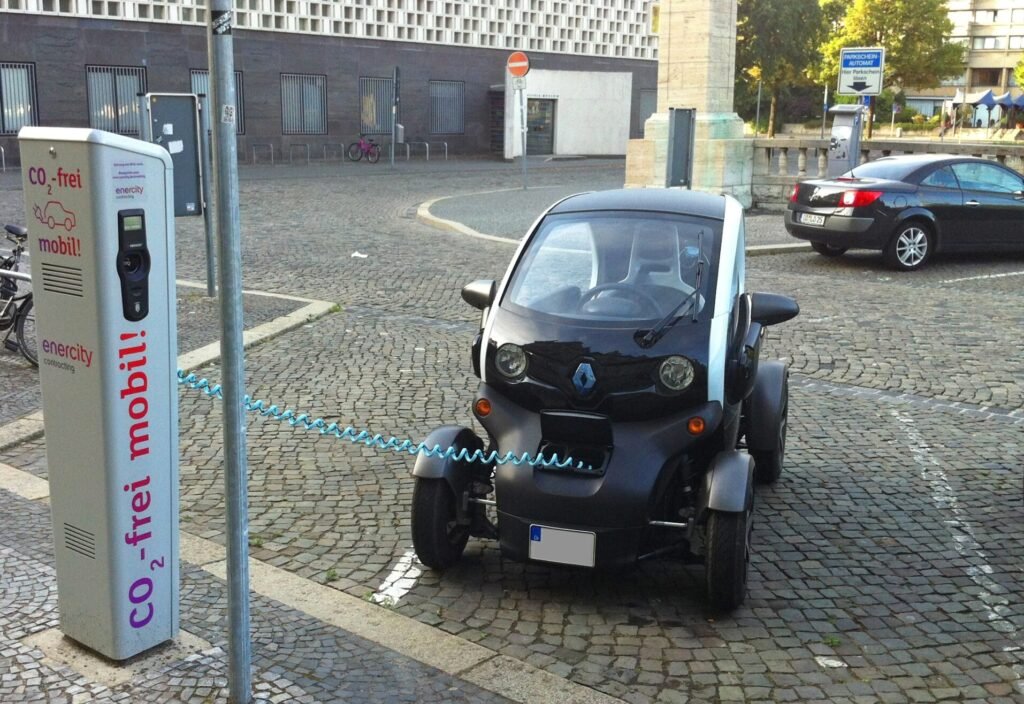
How far can the Twizy Renault electric car go on one charge?
The Twizy has a range of about 100 kilometers (62 miles) under ideal conditions. Actual range depends on terrain, weather, and driving style.
Is the Twizy street legal?
Yes, in most countries, the Twizy is street legal. However, it’s typically classified as a quadricycle, which can affect where and how it can be driven. Check your local vehicle regulations.
Can I charge the Twizy at home?
Absolutely. The Twizy comes with a built-in cable that plugs into a standard household socket. Full charging usually takes about 3.5 hours.
Does the Twizy have heating or air conditioning?
No, the Twizy does not come with traditional HVAC systems. Some weather protection accessories are available, but it lacks full climate control.
Is the Twizy a good option for daily commuting?
For short, city-based commutes, the Twizy is an excellent option. It’s cost-effective, environmentally friendly, and ideal for urban traffic and parking.
Conclusion: Is the Twizy Right for You?
The Twizy Renault electric car is a symbol of how innovative thinking can reshape urban transportation. While it may not replace traditional vehicles for all purposes, it excels in its niche—short-distance, city-based travel.
For eco-conscious individuals, urban professionals, students, and even businesses, the Twizy presents a bold, sustainable alternative. It challenges conventions not only in terms of design but also in how we think about personal mobility.
If you’re considering a unique electric vehicle that’s fun, functional, and future-ready, the Twizy might be your perfect match.

